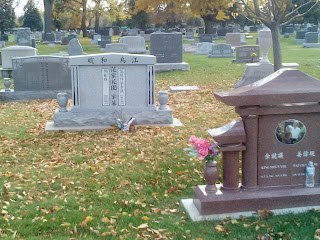--- Notes on the soul ---
The soul is neither apart from the body nor the same as the body; for it is not, indeed, the body; yet is something of the body.... It is not the body, for it is not matter; but it is essentially involved with the body, because it is its actuality....
Aristotle
It seems to me that everyone, myself included, talk as though they know what "soul" is. I'm admitting here that I don't know what soul is and I don't believe anyone else does either. I don't think Aristotle did but I suspect that our opinions are close enough that we could have had an amiable conversation on the topic.
The word "soul" is as scrambled up as the word "love". Sometimes it seems that people are using "soul" and "spirit" interchangeably. At other times, they seem to mean different things. Any discussion about soul needs to start with an attempt to agree on what "soul" refers to.
First, I'll tell you about my model of a person, then I'll tell you what I think a "soul" is.
I conceptualize a person as having four parts: a body, a soul, a spirit, and an environment.
You might debate whether you're environment is part of you. I frankly can't see any reason for differentiating sharply between self and other, but I've commented on that in other places.
The body is the material, organic part that you have most control of. Along with your environment, this is the part you can measure aspects of in a lab.
Spirit is, of course, debatable but my experience leads me to believe that there is a part of us that's outside of our material existence. Where I diverge with many people who also believe in spirit is that I believe that everything has an underlying spirit component - not necessarily conscious but composed of something that can be called "spirit".
The soul is that part of a person that makes them who they are. In my model, it is synonymous with "mind".
So what is "soul"?
In any list of unanswered questions of science, pretty close to the top, quite often number one, is the questions, "What is consciousness and how does it work?" If you don't see the problem here, you're not trying hard enough. The central aspect of our existence is our consciousness and our science, the most powerful tool we have for understanding our world, can't tell us what it is.
I've watched several lectures and documentaries on consciousness studies (a real field that combines philosophy, psychology, medicine, and just about everything else) and they all tell what we know about consciousness and they are all quite honest in saying that we don't know what consciousness is. Sartre would say (and did say) that it just is and that's all you can say about it.
So, I can tell you what I think but in the end, I don't know.
I think that, as we live and develop as persons, our brains generate information. That information holds together to give us an idea of who and what we are. Information, like fields, is primary in our universe. It's the bottom level. You can say what it does but you can't say what it is.
If you say that a field is a map of values of some quantity in space, you're describing it - you're not saying what it is. You can say what just about everything else is in respect to fields. For instance, mass is a product of the Higgs field, but you can't say what a field is.
In the same way, you can say what information does, but you can't say what it is, and information is not necessarily the same thing as "meaning". Meaning, a kind of information, is derived from information by conscious minds but information doesn't require a mind to exist. When scientists ask whether the information in a particle is lost when it spirals into a black hole, that kind of information would exist whether there is a thinking being in the universe or not.
The thing is that the kind of information called "soul" or "mind" has no independent existence. It requires some substrate to exist. That substrate, in my experience, can be a material brain (the one that generated it) or spirit. The 1s and 0s in a computer's memory and zipping along it's wires are information, but the soul of the computer is the meaning that those 1s and 0s have for the computer (if any) and for others. Destroy the body, spirit, and environment and there's no longer a substrate for a soul and the soul no longer exists.
Does this all make sense? I hope so because this blog has been an awful lot of work (Whew!)

























